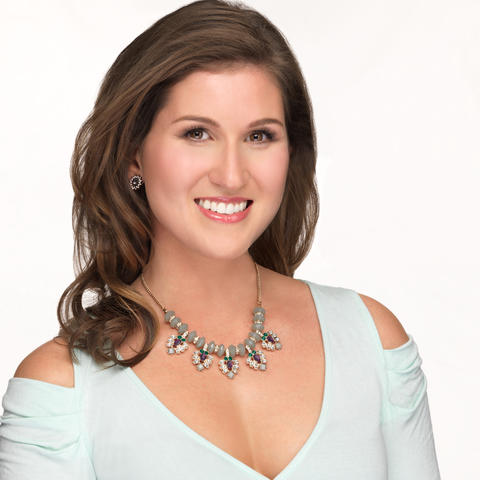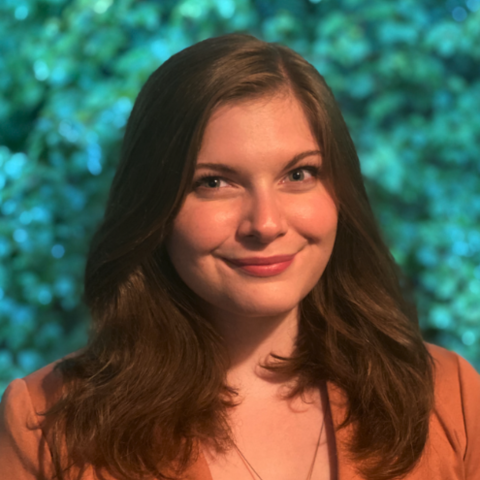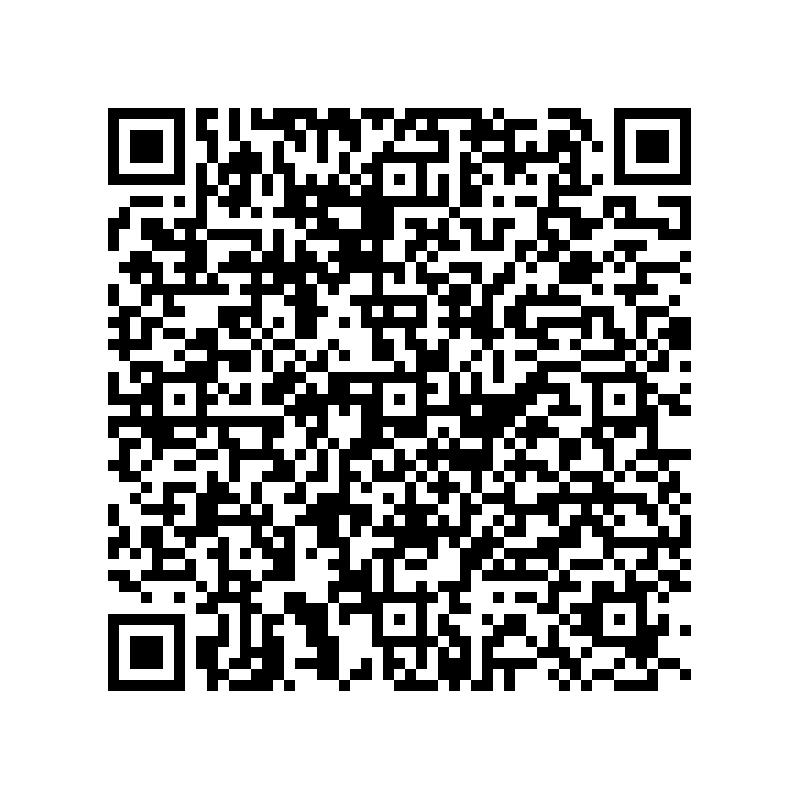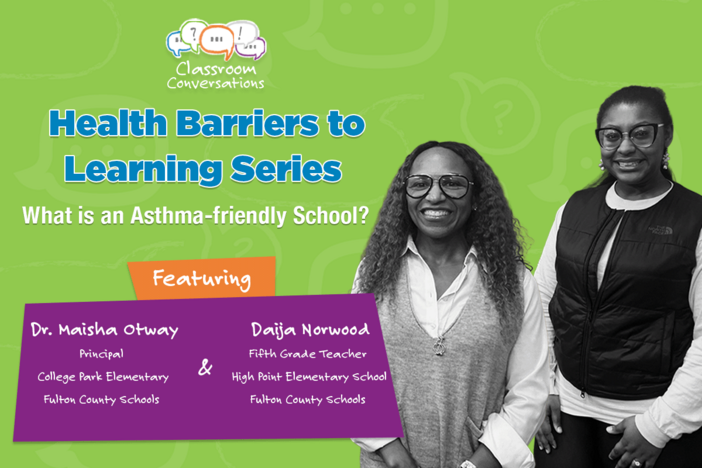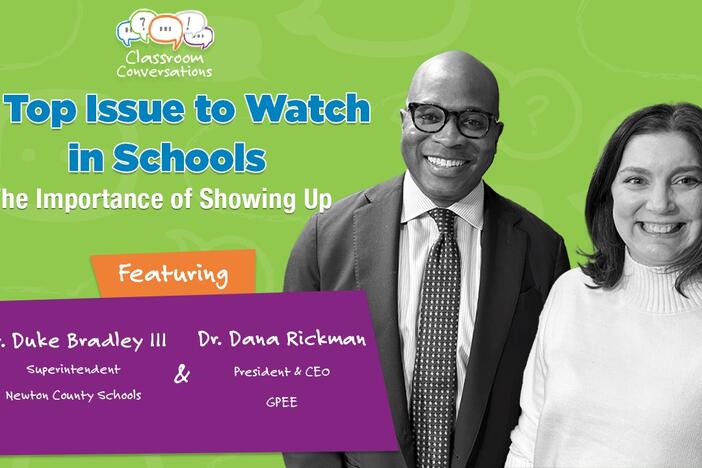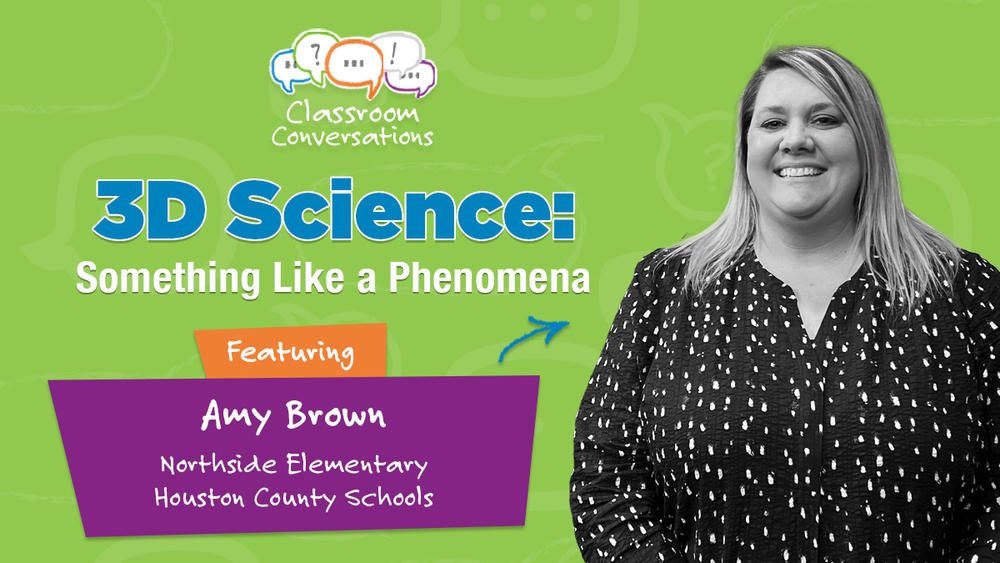
Section Branding
Header Content
Episode 310: 3D Science: Something Like A Phenomena
Primary Content
Get students interested in science by bringing the subject from the page to real life! Join us in conversation with third grade teacher Amy Brown to learn how hands-on, inquiry-based 3D science instruction can improve students understanding of the natural world.

Get students interested in science by bringing the subject from the page to real life! Join us in conversation with third grade teacher Amy Brown to learn how hands-on, inquiry-based 3D science instruction can improve students understanding of the natural world.
Watch this episode on YouTube.
TRANSCRIPT
Ashley Mengwasser: Hey Georgia Educators, we have new discussion guides available to use with Classroom Conversations episodes. These discussion guides include open-ended questions to facilitate great discussion and professional learning. After listening to each podcast, find the new discussion guides posted with the Classroom Conversations episodes and blogs in Georgia Home Classroom. Hello educators. This is Classroom Conversations presented by the Georgia Department of Education and Georgia Public Broadcasting from the hot mics of GPB studios in Atlanta. Welcome to the platform for Georgia's teachers. I'm your host, Ashley Mengwasser. I'm a real host, but in podcast forum, I'm not 3D, but today's topic is. It's 3D science. Now, let's hope my interview doesn't fall flat. Ignite your Bunsen burners, rinse your graduated cylinders as we prepare for a real phenomenon. Today's guest says science is in her bloodline, even though she spurred the subject in her younger years. Amy Brown is the trifecta of 3D. She teaches third grade, first of all, and leads instruction in three main subjects; science, math, and social studies at Northside Elementary School in Houston County. Amy is also a curriculum writer for Houston County, so she helps design the lesson plans. Hi Amy.
Amy Brown: How are you?
Ashley Mengwasser: How are you?
Amy Brown: I’m good.
Ashley Mengwasser: I love that you're a curriculum writer. That's so interesting.
Amy Brown: Thank you.
Ashley Mengwasser: Does take quite a bit of your time when you're not in the classroom?
Amy Brown: Not really. We tend to do it in the summers.
Ashley Mengwasser: Okay. So that's your summertime gig?
Amy Brown: Yes.
Ashley Mengwasser: Just out here writing lesson plans.
Amy Brown: Yes, or components of lesson plans. It's really great because we get opportunities to have extra training and sometimes we get to train other teachers throughout the school year. So that's nice. It really wasn't anything that I wanted to do to begin with. It kind of fell into my lap. It's been fun to be a part of that, for sure.
Ashley Mengwasser: Can’t stop; won't stop. I love it. What is your connection to science? It runs in the family; you told me.
Amy Brown: Yes. Well, I really was not interested in science when I was growing up. I feel like it runs in the blood because my dad was actually a zoology major when he was in college, and he ended up doing nothing with that. He's a businessman now. Also, his grandparents, my great-grandparents, they were big into plants and they sold plants to friends and in the community and things. My aunt, she's a big gardener as well. When I met my husband is really when I started to learn more about plants and hunting and animals and fishing and all of that. So I just really got super interested in it.
Ashley Mengwasser: You embraced the wild.
Amy Brown: Definitely.
Ashley Mengwasser: Which probably helped you embrace science, which is now your favorite subject.
Amy Brown: It is. But when I first began teaching 18 years ago, it was always my favorite. I think it was because it was so hands on, and it was more fun for me to teach. But then as I got older in my career, I realized I'm really interested in this and I really want to take off with this.
Ashley Mengwasser: Look at that. What do you love about science? Tell us more about that.
Amy Brown: I love that it's hands on and engaging, and you get to have all this inquiry about life. Why is this this way? Why does this work this way? I feel like there's really no wrong answer in the beginning when you're learning as a student. I struggled so much in school growing up, and I've always was scared to say the wrong answer. And so I think with science, I feel like most kids have an even playing field because they're looking at something and they're just asking question. They're just making an observation. Anybody can do that.
Ashley Mengwasser: Exactly. We're just trying to get to the root of it. We can all ask interesting questions and come up with different hypotheses. True or false. And this is in the realm of you, Amy Brown; you have eaten rattlesnake. True or false?
Amy Brown: This is true.
Ashley Mengwasser: What in the world? Is this a love of science? You're paying your homage to the wilderness out there? I don't understand.
Amy Brown: My husband and I had a rattlesnake in our driveway. We took care of it. Once he had killed it, I was like, "Okay, I want the rattle now. I got to have the skin now," because I was thinking of my students immediately. And then he was like, "You know you can eat rattlesnake, right?" And I'm like, "Hmm, I don't know about that." So I had to try it. I did not enjoy it.
Ashley Mengwasser: You did not. Describe rattlesnake.
Amy Brown: All I could say is that it was very chewy.
Ashley Mengwasser: Oh no. I don't support this whatsoever. You told us this one a little bit, but I want to know specifically. You know how to hunt and can. True or false?
Amy Brown: True. I'm getting better at canning.
Ashley Mengwasser: Yeah, so that's true and false, like I set it up.
Amy Brown: I only know how to hunt because of my husband. I can't say that I personally have killed anything yet, but I've gone with him on many adventures and he's been teaching me a lot.
Ashley Mengwasser: Right, you're hunting adjacent.
Amy Brown: Yes.
Ashley Mengwasser: Exactly. Okay. What can you can? Yes, she can.
Amy Brown: Pickled okra and jalapenos.
Ashley Mengwasser: Oh, nice.
Amy Brown: We also freeze and blanch a lot of things. We love to grow zucchini and squash. It thrives very well in the area that we live in. Jalapenos thrive very well. Green bell peppers, and of course, we do tomatoes. They don't always do well, though.
Ashley Mengwasser: They don't?
Amy Brown: No.
Ashley Mengwasser: Do you ever do fried green tomatoes?
Amy Brown: Oh yeah.
Ashley Mengwasser: Of course.
Amy Brown: So good.
Ashley Mengwasser: I bet they're better at your house than any restaurant.
Amy Brown: Yes. And again, my husband is the cook. He's phenomenal.
Ashley Mengwasser: I've got to meet this man. What's your husband's name?
Amy Brown: Dustin.
Ashley Mengwasser: Good job, Dustin, teaching her everything she knows. Keeping her love of science alive. True or false, last one: You once met John Travolta in the flesh.
Amy Brown: Oh, false.
Ashley Mengwasser: Oh yeah, I know.
Amy Brown: I wish.
Ashley Mengwasser: I totally made that up just to invoke the 1996 classic film Phenomenon; John Travolta and Kyra Sedgwick. Why? Because we're going to talk about what phenomenon is in this episode and more about 3D science. In your personal 3D reality, Amy, you have a big renovation underway right now. What are you renovating, ma'am?
Amy Brown: We have a farmhouse that we bought. It's about 120 years old. We're about to start renovating that and living in a camper.
Ashley Mengwasser: Oh my gosh. There needs to be a companion Instagram account for this experience.
Amy Brown: I know many people have asked. I'm still debating.
Ashley Mengwasser: Does the camper have all the amenities one would need?
Amy Brown: Yeah, it does. My mother-in-law gifted it to us. It was already on the property and it's got a septic set up and everything. There's a shower and kitchen, bed and everything.
Ashley Mengwasser: That's lovely. So you will wake up in your camper and go to your classroom. From the camper to the classroom and back. How long will your renovation take on your farmhouse?
Amy Brown: We're hoping by the end of summer we'll be done. But you just never know. We're going to keep the bones of the house for sure, but you never know when you get into renovations. This is our second home we're renovating.
Ashley Mengwasser: Oh, you've done this before?
Amy Brown: We have done this before, just not with an old farmhouse.
Ashley Mengwasser: You're not neophytes. You had the bones of the house. You're probably also keeping the bones of whatever was once there 120 years ago. Creatures all around the property.
Amy Brown: We actually have a chicken coop, so we're going to get chickens soon. It's four acres. It's beautiful. It's really flatland. It's basically surrounded by pecan orchards, so it's gorgeous.
Ashley Mengwasser: What other animals?
Amy Brown: For now, just chickens. We have our three pit bulls.
Ashley Mengwasser: Well, as we tap into the realm of science, here are two quotes I just want you to think about. Here's the first one. "Science is the process that takes us from confusion to understanding." That's Brian Greene. What do you think about that one?
Amy Brown: Oh, I totally agree with that. You look at something and you go, "Why is this happening? I'm very confused about this." And then as you inquire and learn more, especially in the classroom, and you get to interact with reading and writing and getting educated on it, it starts to unlock and make sense. And when you complete a lab or some kind of concept like that, you can watch it in action. So I definitely agree.
Ashley Mengwasser: Greene also said this one. "When kids look up to great scientists the way they do musicians, actors, and sports figures, civilization will jump to the next level."
Amy Brown: Definitely. Role models are so important for children, whether it's the actual teacher in their classroom, a peer of theirs or someone famous in the world that's done something really great.
Ashley Mengwasser: Something you should know. Here are two very profound science quotes that I like, Amy. "We are all star stuff," Carl Sagan. Simple, yet effective. And this one from Bill Nye. "Science Rules."
Amy Brown: Oh, I love Bill Nye. I grew up on him.
Ashley Mengwasser: Two words says it all; science rules.
Amy Brown: Definitely.
Ashley Mengwasser: I like your point about really thinking about science in our everyday lives and noticing scientists all around us and people who are pursuing science. Tell me about this book that you share with your students about an aspiring young scientist.
Amy Brown: Yeah. One of my favorite books is called Rosie Revere, Engineer. It's about a little girl, and she has all these wonderful ideas and she starts creating things and trying to see if they'll work. Some of her products start to work, but then they fail. She gets laughed at and she's super embarrassed and she doesn't want to try anymore. But then she has this aunt named Rosie who's like, "Oh, silly girl. You got this item to start to work and you're supposed to fail. How else are you going to succeed if you don't fail?" And so she keeps trying, and she has success in the end. And her aunt talks about the only true failure can come if you actually quit.
Ashley Mengwasser: Beautiful. What a beautiful story. Your kids like hearing that?
Amy Brown: Oh yeah. Definitely.
Ashley Mengwasser: That's a good message. Well, today we're looking at 3D science under the microscope. My first question, Amy, is what is it? What is 3D science?
Amy Brown: You hear 3D, and you think, "Oh, it's going to be 3D printing, or something really cool."
Ashley Mengwasser: With depth, right? Yeah.
Amy Brown: Right. Which it can incorporate that for sure. When I first began teaching 18 years ago, I did a lot of one-dimensional science teaching. I was teaching the discipline. I looked at the standard and I was like, "Okay, we're going to read about it. We're going to maybe watch a video and we're going to write about it." And that's still effective, but now it's so much more. What it is, is it's taking the normal disciplines that we would teach earth science, life, physical, engineering and technology, and we're taking that and we're unlocking it, and we're just making it even more student driven. In the past it was teacher driven and now it's more student driven. We also incorporate disciplinary core ideas with the scientific practices like investigation, asking questions, analyzing data, things that actual scientists do in a lab. And then we use cross-cutting concepts as well. So we're looking for patterns. We're looking for proportions. We're looking for cause and effect and things like that. It's this interlocking integration of all these things, and everything is centered around science phenomenon.
Ashley Mengwasser: I love it.
Amy Brown: Do you want me to elaborate on that?
Ashley Mengwasser: So that's the 3D part of it.
Amy Brown: That's the 3D part.
Ashley Mengwasser: It's based on something real.
Amy Brown: Yeah.
Ashley Mengwasser: Was it an easy process or did it take time to implement when you first transitioned to 3D science?
Amy Brown: For me, it took a while because I had been teaching it one way. And so as I began learning and began curriculum writing and learned about what it was, it took me years to develop that curriculum. Each year we would do something different in the summers and add to it for our county, because we create lesson plans for our teachers, which is a beautiful thing. So we have these lesson plans written based on 3D science for these teachers to just pick up and do, which is great. So I was having to really understand it better, learn about it, research it, so it took me a little bit longer. But as far as picking up the lesson and doing it, oh, that's easy. That's the fun part.
Ashley Mengwasser: So, it has gotten easier for you since then?
Amy Brown: Oh Yeah. Definitely.
Ashley Mengwasser: Absolutely. Well, you teed up the next question, which is what are phenomena?
Amy Brown: I didn't want to tell it too early. In layman's terms, phenomenon is basically something in the natural world that can then be explained scientifically. It's not like magic. It appears to be magic, but it can actually be explained scientifically.
Ashley Mengwasser: So, there we go. Okay. A phenomenon. Talk to me a little bit about this; the 5E model with 3D elements. What is the 5E model?
Amy Brown: Most teachers are probably familiar with the 5E model, especially if you're a newer teacher starting out, because that's probably all you know. It's part of 3D. It's five different components in a lesson plan that really make it student driven, really get them engaged. The first E for engagement. That's when you introduce your science phenomenon. For example, one of my favorite lesson plans is from Picture Perfect STEM, which is some lesson plans that you can purchase and buy. It's a great 5E model that teachers can use. One of the lessons they have is about turtles, and that's something that we study in third grade. We study habitats and organisms and adaptations. The first thing we do is we post a picture of turtle tracks in the sand on the coast, and there's nothing in the picture other than that. And you post it up and you ask the kids, "What do you see? What do you have questions about?" Some of the kids have been to the beach and they might have seen that before. And they might be like, "I've seen those at the beach before." And then other kids may not have that background knowledge, but it brings them to the same playing field because they're looking at the same picture and they're asking the same kind of questions and being able to engage in that. It really gets the kids engaged. And then you continue to come back to that phenomenon. And that's a phenomenon. It's simple, right?
Ashley Mengwasser: Turtle tracks is a phenomenon.
Amy Brown: It's a phenomenon, totally. A lot of times I used to think, "Oh, phenomenon has to be a black hole or something really hard to explain." It can be anything out there in the natural world. It can be very simple, anything that you're inquiring about. After we engage them with a phenomenon, we then explore. What I used to do when I taught back in the day is I would say, "Hey, we're going to learn about plants today, and now we're going to read about plants, and now we're going to watch a video and let's write about it." Okay, moving on. And then as I developed more of my education, I'd be like, "Okay, maybe we might watch a plant grow and record a plant growing." But now it's more student driven, so the kids are going to do all these labs and hands-on experiments. Sometimes they come up with their own stuff. They'll be like, "Can I try this lab out?" Like when I teach rocks and minerals, a lot of times kids will be like, "I want to do a sink or float lab."
Ashley Mengwasser: Look at that.
Amy Brown: I'm like, "Okay, let's try it out." So they're in this explorer phase. And then we go into the explaining phase. They start to read. They start to watch videos. I start to fix misconceptions they may have, and that's where they're learning-
Ashley Mengwasser: Start to get to the bottom of it. Yes.
Amy Brown: And then after that, they may elaborate on it. So they may apply it in a different way. They may be talking about how life cycles of a turtle are very similar to the water cycle.
Ashley Mengwasser: Oh, interesting.
Amy Brown: Or very simple to bicycle parts. It's just how it works. And there's some type of evaluation piece at the end.
Ashley Mengwasser: So, evaluate is piece five. That's the 5E model. You're just using it in the 3D context?
Amy Brown: Exactly.
Ashley Mengwasser: I got it.
Amy Brown: Yeah, it's just part of it, for sure. It's a phenomenal way to teach science. The kids get really engaged and interested. I have to say, I mean, you're not always going to have every student love science, but in third grade, most of the kids really love science. They really want to know more about it.
Ashley Mengwasser: They like it, yeah. That's usually one of their favorite subjects, if I remember correctly.
Amy Brown: Yes. It's definitely one of mine.
Ashley Mengwasser: We know. How does centering science instruction around that phenomenon provide opportunities for all the students? You already kind of mentioned that they're starting from the same place. What other ways do you see them all kind of drawn to the subject?
Amy Brown: I think they all get interested in it. Somebody might have seen a picture in a book when they're reading about the tracks and not have been very engaged, but then when you display it in front of the class and you kind of make it mysterious and exciting, everybody's interested in it.
Ashley Mengwasser: That's the truth. How does centering science instruction around phenomena really make you rethink children's ability for understanding and engaging in science? I mean, 3D probably changes the game for what you see that they can be capable of, right?
Amy Brown: Absolutely. I mean, as educators, we are differentiating learning all the time. So you still have to do that. But with this 3D model, the kids are able to... Like I said, it's student driven, so they're able to lean into each other. They're able to teach each other and share with each other. They're more on the same playing field. Everything's really hands on and engaging, and that makes it much easier. If a student has a learning disability and they're not the best reader, but they can still look at a picture of a phenomenon-
Ashley Mengwasser: And react to it.
Amy Brown: Absolutely. I want to share this too, because it doesn't just have to be a picture that you post for a phenomenon. It could be a video clip of something. It could be a science mystery. We have stories that we'll read to unlock the phenomenon and get the kids interested. It could be a science probe, which is a lot of times a question with maybe a checklist. One of ours is about rocks and minerals, and it says, "Which of these items do you think are rocks?" And it's got a jagged boulder, pebbles, sand, and they have to put an X if they think it's a rock or not. You do it at the beginning of the unit. So you get good background knowledge on them. And then they have to define what they think a rock is. And then you can return to it at the end of the unit and see how much they've learned.
Ashley Mengwasser: It's kind of the reverse approach, right? You're starting with the end result, and then you're going back and looking at how it came to be.
Amy Brown: Yes.
Ashley Mengwasser: It's wonderful because you already have the hook. It is the hook into the learning. How does teaching 3D science support other content areas maybe?
Amy Brown: Well, it really supports it very well because as you're learning about the content, you're able to incorporate reading skills. A lot of the cross-cutting concepts are literacy related. Like cause and effect and things like that. You see cause and effect. We have to teach that in our reading elements. In our standards, we have to teach cause and effect and theme. You see that in science. Of course, you're going to use math integration because if you're doing any kind of lab and recording anything, you might be weighing rocks. You might be measuring a plant and how tall it's been growing. So you're using your math skills. And then, of course, we write about it. We have kids also share out about it and present presentations in class. So they're practicing their speaking skills. So, they're really integrating all the other disciplines that we teach. I feel like science is the one only subject that does that. It has every subject in it.
Ashley Mengwasser: Interesting, yeah. So that's an access point to other disciplines as well.
Amy Brown: Yeah.
Ashley Mengwasser: You mentioned phenomenon that that is not magic, that we're looking at something real world that we can measure, that we can look at and inspect. So how does three-dimensional science help engage student's background knowledge? They're able to come to the floor with some things they know sometimes, I imagine.
Amy Brown: Definitely. I think it makes them even more curious and even more excited because maybe they've experienced that or seen it, but they didn't really know how it works scientifically. So they were thinking it was magic. We'd love to believe in magic, and that's exciting, but it's also fun to have the science knowledge behind it. And then they go share that out. They'll go home and share with their families about it, and everybody they can. They get really excited.
Ashley Mengwasser: That's beautiful. Science is exciting, and it has almost the same sound. That is cool though, because we're talking about it almost makes them more enthusiastic to see behind the curtain.
Amy Brown: Definitely.
Ashley Mengwasser: They get it. They understand the why. That's even more dazzling than if you knew nothing, I think sometimes.
Amy Brown: Yes. I mean, as a kid, when I was learning, like I told you before, I was never interested in science at all, because I think it was so one dimensional and it did not make sense to me. When I got into high school and we were incorporating math, I was like, "Oh, this is terrible. Let me just get through this course." And then being able to teach it to third graders, I mean, we have really fun curriculum at the elementary level too, I feel like. Life science is probably one of my favorite things. I like earth science too, but life science is great because it deals with animals and I'm such a big animal lover that it's just fun. Every time I teach them, I learn something new. Every time I introduce phenomenon and hear them inquire, I'm like, "I didn't think about that. That's really cool."
Ashley Mengwasser: It's bringing up things you want to delve into further. That's beautiful.
Amy Brown: What would you recommend to a teacher who is new to 3D science? It is all the more fascinating. It's probably a lot more to think about. What are some of your best tips for teaching this? I think just give it a chance. That's really my biggest thing I would say. Well, I will backtrack here. Make sure you have a lesson plan that is incorporating 3D science. Make sure you're using that correctly. And once you have that, just give it a chance. Maybe find a veteran at the school that's doing it and pair up with them and make sure you're doing what you need to do and then just go for it. I always love Miss Frizzle; make changes, make mistakes, get messy.
Ashley Mengwasser: Of course. She's so relatable. Yeah.
Amy Brown: She is. Like I was telling you before, I am a teacher that's like organized chaos. I'm like, "Okay, we're doing a lab. We're going to get really messy."
Ashley Mengwasser: Let's get messy.
Amy Brown: But then I want it cleaned up. I like the structure too. A lot of teachers either don't have the time or they're stressed out about getting the materials managed and all of that. So, if you team up with other colleagues and share out the materials and prep it together, that can save you some time. Just take the risk. Give it a try. Look at the 3D model, look at the lesson plan, and just try it out. I think you'll be really pleasantly surprised with how fun it is for you and for your student.
Ashley Mengwasser: And just how accessible it makes the learning targets as well.
Amy Brown: Definitely.
Ashley Mengwasser: Yeah. It's like having a constant visual aid, which is the dream, honestly. Okay, what are your top three 3D science subjects?
Amy Brown: Like I said, I love the Picture Perfect. There's Picture Perfect Science, Picture Perfect STEM books. One of my favorite lessons that we are allowed to use, because we bought a license for them, is the one on Turtles.
Ashley Mengwasser: Turtles; that's a good one.
Amy Brown: The kids just love it. It teaches all about how turtles migrate and how they come back to the place they were born to lay their eggs and how the moms abandoned them. And the kids just get so excited about it.
Ashley Mengwasser: How the moms abandon them.
Amy Brown: They do. They bury the eggs and they leave. They cannot get over that.
We have one we do on lichen, the organism that grows all over the trees and stuff.
Ashley Mengwasser: Oh, yes. Is that a fungus?
Amy Brown: It's a type of organism like fungus. We introduce that one with a science mystery story. It's about these kids that are out in nature and they're seeing it everywhere, but then they're seeing it on cars and doors and they're inquiring about what it is. Then we get iPads. In the explorer phase, we get iPads. We go out to the school campus outside and we hunt for lichen and they have to take photographs of it.
Ashley Mengwasser: Lichen hunting. You're bringing your hunting discipline to bear. Yes.
Amy Brown: That's right. And then we come back in, and we put it in bags, and we observe it. We analyze it and get magnifying glasses out and take notes and record facts. They have to go home and find lichen at their house and share that. I mean, they get really into it.
Ashley Mengwasser: Lichen hunting. This needs to be a thing, Amy. This is a thing that you need to spearhead. What's a third favorite lesson that you like to teach?
Amy Brown: We have just been doing rocks and minerals. I introduced that one with a science mystery as well, about two little girls that climb a mountain with their dog Ticket. They're climbing the mountain and they're noticing all the different rocks, sand, boulders, loose stones, stones that collect water. And they're like, "Why are all these the different sizes? Why are some down here and up here?" I mean, they have all kinds of questions about it. And then we go on a rock hunt. More hunting outside. Collect rocks and record and observe the rocks, weigh the rocks, measure the rocks, do all the things with that. And then the kids are able to learn about how we would characterize rocks by their color or by their size.
Ashley Mengwasser: Or how they were made by the earth. Geology is just so fascinating.
Amy Brown: Definitely.
Ashley Mengwasser: I took it in college. Wonderful. I became very fascinated with lead pencils.
Amy Brown: Really?
Ashley Mengwasser: Geology; this is amazing. Thank you so much, Amy. Any last words about 3D science before we go?
Amy Brown: Like I said, just take chances, make mistakes, get messy, to quote Ms. Frizzle. Just enjoy it. Have fun.
Ashley Mengwasser: Yes. You would make Ms. Frizzle so, so proud.
Amy Brown: Oh, thank you.
Ashley Mengwasser: I bet she knows that you're here today. Okay, here's one phenomenon to track and share far and wide, this podcast series, and there's scientific proof that we'll be back with another episode next week. In the meantime, just remember your 5Es when you're exploring the 3D model and remember that you're a great teacher. I'm Ashley. Goodbye for now. Funding for Classroom Conversations is made possible through the School Climate Transformation Grant.
Get students interested in science by bringing the subject from the page to real life! Join us in conversation with third grade teacher Amy Brown to learn how hands-on, inquiry-based 3D science instruction can improve students understanding of the natural world.

